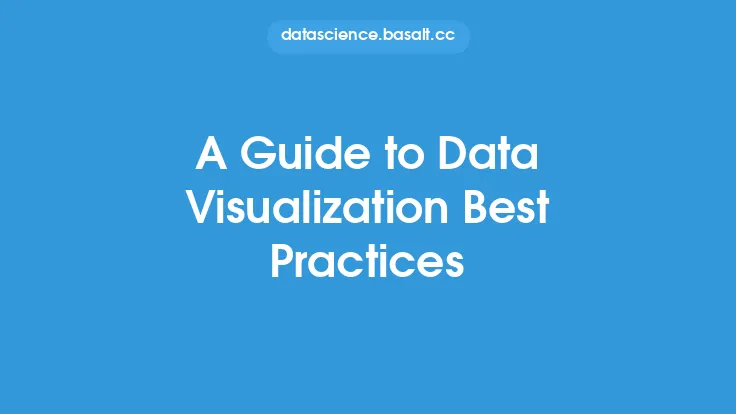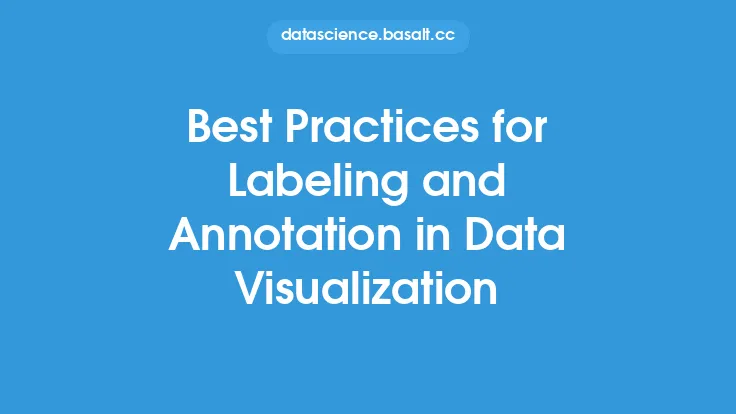When creating data visualizations, it's easy to get caught up in making them look visually appealing, but aesthetics should never come at the expense of functionality. A good data visualization should strike a balance between the two, effectively communicating insights and trends in the data while also being easy on the eyes. In this article, we'll explore the best practices for balancing aesthetics and functionality in data visualization, providing you with the tools and techniques you need to create effective and engaging visualizations.
Understanding the Importance of Balance
Before we dive into the nitty-gritty of balancing aesthetics and functionality, it's essential to understand why this balance is crucial. A data visualization that prioritizes aesthetics over functionality can be misleading or confusing, while one that prioritizes functionality over aesthetics can be dull and unengaging. By striking a balance between the two, you can create visualizations that are both informative and visually appealing, making them more effective at communicating insights and trends in the data.
Principles of Aesthetically Pleasing Data Visualization
So, what makes a data visualization aesthetically pleasing? There are several key principles to keep in mind when designing your visualization. First, consider the color palette. A well-chosen color scheme can make your visualization more engaging and easier to read, while a poorly chosen scheme can be overwhelming or even misleading. Stick to a limited palette of 3-5 colors, and use contrasting colors to draw attention to important elements. Next, think about the typography. Choose a clear, readable font, and use headings and subheadings to create a visual hierarchy. Finally, consider the layout and composition of your visualization. Use white space effectively to create a clean and uncluttered design, and balance text and images to create a visually appealing whole.
Principles of Functional Data Visualization
While aesthetics are important, functionality is equally crucial. A functional data visualization should be easy to read and understand, with a clear and concise message. To achieve this, consider the following principles. First, keep it simple. Avoid clutter and unnecessary elements, and focus on the key insights and trends in the data. Next, use clear and concise labeling and annotation. Use labels and annotations to explain the data and provide context, but avoid overwhelming the viewer with too much information. Finally, consider the level of detail. Provide enough detail to be useful, but avoid providing so much detail that the visualization becomes overwhelming.
Choosing the Right Visualization Type
The type of visualization you choose will depend on the nature of the data and the story you're trying to tell. Different visualization types are suited to different types of data and different insights. For example, bar charts and column charts are great for comparing categorical data, while line charts and area charts are better suited to showing trends over time. Scatter plots and bubble charts are useful for showing relationships between variables, while heat maps and treemaps are great for showing complex data sets. By choosing the right visualization type, you can create a visualization that effectively communicates the insights and trends in the data.
Best Practices for Balancing Aesthetics and Functionality
So, how can you balance aesthetics and functionality in your data visualizations? Here are some best practices to keep in mind. First, start with a clear and concise message. What insights and trends do you want to communicate? What story do you want to tell? Once you have a clear message, you can design your visualization around it. Next, keep it simple. Avoid clutter and unnecessary elements, and focus on the key insights and trends in the data. Use clear and concise labeling and annotation, and provide enough detail to be useful but avoid providing too much detail. Finally, test and refine your visualization. Show it to others, gather feedback, and refine your design until you have a visualization that is both aesthetically pleasing and functional.
Technical Considerations
When creating data visualizations, there are several technical considerations to keep in mind. First, consider the data itself. Is it clean and well-organized? Are there any missing or duplicate values? Next, think about the tools and software you're using. Are they capable of handling large data sets? Do they provide the features and functionality you need to create effective visualizations? Finally, consider the output. Will your visualization be viewed on a desktop computer, a tablet, or a mobile phone? Will it be printed or displayed digitally? By considering these technical factors, you can create visualizations that are both effective and efficient.
Common Mistakes to Avoid
When balancing aesthetics and functionality in data visualization, there are several common mistakes to avoid. First, avoid overwhelming the viewer with too much information. Too many colors, too much text, and too many elements can make a visualization confusing and difficult to read. Next, avoid using 3D or other fancy effects unless they add real value to the visualization. These effects can be distracting and make the visualization more difficult to read. Finally, avoid using visualization types that are not well-suited to the data. For example, using a pie chart to show complex data can be misleading and difficult to read.
Conclusion
Balancing aesthetics and functionality in data visualization is a crucial aspect of creating effective and engaging visualizations. By understanding the principles of aesthetically pleasing and functional data visualization, choosing the right visualization type, and following best practices, you can create visualizations that communicate insights and trends in the data while also being easy on the eyes. Remember to keep it simple, use clear and concise labeling and annotation, and test and refine your visualization until you have a design that is both aesthetically pleasing and functional. With these tips and techniques, you'll be well on your way to creating data visualizations that are both effective and beautiful.





